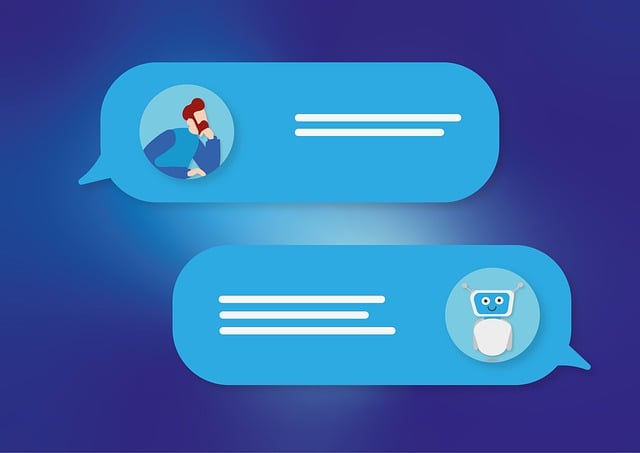Understanding the Role of AI Chatbots in Customer Support
In today’s fast-paced digital landscape, businesses face the daunting challenge of providing exceptional customer support while managing resources efficiently. Enter AI chatbots, a revolutionary tech innovation that can transform how companies interact with their customers. These intelligent programs can simulate human conversation, making them invaluable for organizations aiming to streamline their operations. Users today demand quick responses and support that is readily accessible at any hour. However, implementing AI chatbots effectively requires strategic thinking and careful planning. Understanding their capabilities and limitations is key to leveraging their full potential.
AI chatbots serve multiple functions within customer support. They can answer frequently asked questions, guide users through processes, and even escalate complex issues to human agents. For many businesses, this means a significant reduction in response times. Traditionally, customer support could leave consumers on hold for extended periods, leading to frustration. However, AI chatbots can provide instant replies to queries, leading to improved customer satisfaction. This immediacy not only enhances the consumer experience but can also free up human staff to deal with more intricate cases, allowing organizations to operate at maximum efficiency.
Moreover, these bots can improve over time. By employing machine learning algorithms, AI chatbots can analyze customer interactions to refine their responses. With every conversation, they gather data and learn which approaches work best. Therefore, what begins as a standard program can evolve into a sophisticated conversational partner that understands customer pain points and delivers relevant solutions. This ability to learn and adapt is an essential component of their efficacy, ensuring that a business can keep pace with changing customer needs.
Choosing the Right AI Chatbot for Your Needs
Choosing the right AI chatbot for your customer support can be overwhelming due to the vast array of options available. It’s crucial to identify your specific needs, budget constraints, and the level of tech innovation you are prepared to implement. Some chatbots are highly customizable, while others come pre-packaged with a set range of functionalities. Start by assessing the most common queries your customers have. For small businesses, a basic FAQ bot might suffice initially; however, larger enterprises often require more advanced solutions capable of handling complex interactions.
There are specific features you should look for when selecting your chatbot. First, consider the language support. Your chatbot must provide seamless interaction across various languages if your customer base is global. Next, ensure it can be easily integrated with your existing Customer Relationship Management (CRM) and other software tools. Compatibility will bolster its effectiveness and streamlining data flow between various departments.
A user-friendly interface is another key consideration. A chatbot should be easy to use for both customers and staff members. If a bot is challenging to navigate, it may lead to dissatisfied users—defeating the purpose of adding such technology. Additionally, consider the bot’s analytics capabilities. The more insight you have into customer interactions, the better you can refine your processes and improve your service.
Setting Up Your AI Chatbot
The setup phase is where the foundational work occurs, allowing your AI chatbot to shine in customer support roles. Most AI chatbot platforms provide frameworks and templates to spark your deployment process. Start by defining the goal of your chatbot. Will it focus on resolving customer issues, providing information about products, or something else? By establishing clear objectives from the get-go, you can tailor the chatbot’s responses to align with those goals.
Next, construct FAQs that your chatbot will address. Gather data from your customer service logs. Identify repetitive questions that frequently arise, and base your script around these common inquiries. Organizing this information clearly ensures that the bot provides accurate responses without much delay. You can also engage customer support agents in the process. Their firsthand experience offers a wealth of knowledge, which can help you refine the scripts further.
Integration with communication channels is another crucial step during setup. Most chatbots can connect with social media, websites, and mobile apps—creating a seamless customer service experience. It’s essential to choose the right channels where your customers are most active. For instance, many consumers prefer contacting businesses via Facebook Messenger or directly through websites. Placing the chatbot in these spaces optimizes access and engagement, promoting a user-friendly experience that is readily available when customers need help.
Monitoring and Optimizing AI Chatbot Performance
Once your AI chatbot is operational, continuous monitoring becomes vital to its success. Implementation is not sufficient; businesses must examine how effectively their bots are performing. Data analytics plays a significant role in assessing success. Track metrics such as response times, resolution rates, and customer satisfaction scores. Using analytics tools, you can visualize interactions and identify patterns that require attention. If customers consistently express dissatisfaction or if the chatbot fails to answer specific questions accurately, it may necessitate adjustments to the script or configuration.
Another important aspect of monitoring involves user feedback. Actively seeking input from your customers about their chatbot experiences offers invaluable insights. Incorporate feedback mechanisms within the chatbot itself. For example, after interactions, you can prompt users to rate the chatbot’s responses or provide comments. This data provides a direct reference about areas that may need improvement.
Don’t forget the importance of iterative improvements. Technology continuously evolves, and so do customer expectations. Regularly update the chatbot’s knowledge base and inline scripts. Set a schedule for reviewing performance analytics, and make it a priority to implement changes based on your observations. You may also consider expanding its capabilities. As your business grows, new features may enhance its interaction quality. The more responsive and capable your chatbot becomes, the better your overall customer service experience will be.
Enhancing Human-Agent Collaboration with AI Chatbots
While AI chatbots can handle numerous tasks independently, they also create opportunities for enhanced collaboration between human representatives and bots in customer support. Instead of viewing AI as a replacement for human jobs, organizations should focus on how AI chatbots free up human agents to tackle more meaningful interactions. During peak times, chatbots can manage simple queries, allowing human agents to concentrate on more complex issues that require empathy, creativity, or nuanced understanding. This promotes a better allocation of resources within customer support teams.
Collaboration tools that integrate information between chatbots and human agents can enhance this synergy. When a chatbot escalates an interaction to a human, it can provide a complete record of the previous conversation. This transition is seamless and eliminates the need for customers to repeat themselves, leading to a smoother overall experience. Human agents receive context-specific information that can help them address issues more rapidly, leading to higher satisfaction rates for customers. The efficiency with which these collaborations operate fosters a strong culture of customer care across the organization.
Training is also essential in promoting collaboration. Human agents should receive training on how to work effectively alongside chatbots. Understanding when to take over interactions and how to utilize chatbot data to inform their responses can make a significant difference. Upskilling your staff in areas related to AI interaction optimizes the entire support process—placing you a step ahead in service excellence.
Cost Considerations of Implementing AI Chatbots
Implementing AI chatbots involves a range of costs that businesses must consider. It’s important to evaluate the upfront expenses and the long-term return on investment (ROI) of deploying such tech innovations in customer support. The initial costs can range significantly based on the complexity of the chatbot. Custom-built solutions tend to be more expensive than off-the-shelf software, which may feature limited functionalities.
When deciding on the budget, consider both short-term and long-term implications. While a cheaper solution might seem appealing, it may lead to hidden costs such as customer dissatisfaction, poor performance, or the need for frequent updates. Striking a balance between initial investments and projected long-term gains is crucial. AI chatbots can lead to cost savings by reducing the need for extensive human staff to handle customer queries. Moreover, the boost in customer satisfaction can drive repeat business and, ultimately, contribute to higher revenue.
Consider revealing the financial impact through thorough analysis. Quantifying factors like a decrease in operational costs and improvements in customer retention will underscore the value offered by AI chatbots. Additionally, you can calculate the anticipated increase in sales driven by enhanced customer experience. By connecting the dots between implementation and measurable outcomes, businesses can justify their investment and plan strategically for future technological advancements.
Future Trends in AI Chatbots for Customer Support
The landscape of AI chatbots is continuously evolving. Exciting trends are on the horizon that will shape the future of customer support. One significant trend is personalization. AI chatbots will increasingly learn individual customer preferences and tailor interactions accordingly. Imagine a chatbot that recognizes returning customers, remembers their previous interactions, and offers personalized recommendations based on past purchases. Such tailored experiences can substantially increase customer engagement and satisfaction.
Moreover, AI chatbots will likely integrate more seamlessly into voice technology. With advancements in natural language processing, chatbots will be able to participate in verbal conversations, making interactions more intuitive and human-like. This evolution will appeal to customers who prefer speaking to typing, thus expanding the reach and usability of such technologies.
Lastly, the application of advanced analytics and predictive modeling will empower bots. With the ability to predict customer needs and behaviors based on historical data, chatbots will transition from reactive to proactive agents of support. For example, they may prompt users to seek assistance just before they encounter common pitfalls in navigation or product usage. As AI chatbots continue to improve, we will likely see broader acceptance across industries, fundamentally altering how customer support operates.
FAQs about AI Chatbots in Customer Support
- 1. What are the main benefits of using AI chatbots for customer support?
- AI chatbots offer instant responses to customer queries, improving overall satisfaction. They can handle multiple inquiries simultaneously, reducing wait times and freeing up human agents for complex questions.
- 2. How do I choose the right AI chatbot for my business?
- Assess your specific needs, budget, and the level of tech innovation you want. Look for features such as language support, compatibility with existing systems, and user-friendliness before making a decision.
- 3. Can AI chatbots learn over time?
- Yes, they can! AI chatbots use machine learning to analyze interactions and improve their responses. This capability allows them to adapt to changing customer needs, making them more effective over time.
- 4. How can I measure the performance of my AI chatbot?
- Track metrics such as response times, resolution rates, and customer satisfaction scores. Collect user feedback to get insights on areas needing improvement, and review analytics regularly.
- 5. Will AI chatbots replace human customer service agents?
- Not necessarily. AI chatbots handle routine inquiries but enhance human agent roles by allowing them to focus on more complex issues. Together, they create a more efficient support system that improves customer experiences.



